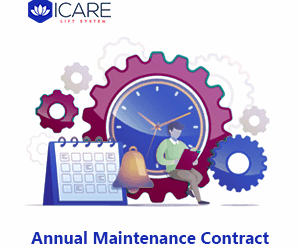In the realm of property development, the visualization of architectural designs has undergone a remarkable evolution, transitioning from traditional 2D renderings to immersive 3D exterior rendering services. This article delves into the myriad benefits of embracing such advanced visualization techniques in property development projects.
3D Exterior Rendering Services
Gone are the days when developers relied solely on 2D blueprints and drawings to convey their architectural visions. With the advent of 3D exterior rendering services, stakeholders in property development can now experience their projects in a lifelike manner, even before breaking ground.
3D Exterior Rendering Services involve creating realistic visualizations of the exterior of buildings or properties using advanced software and techniques. These services help architects, developers, and real estate professionals showcase their projects with lifelike images and animations, aiding in marketing, decision-making, and client presentations.
The Evolution of Property Development Visualization
Traditional 2D Renderings vs. 3D Renderings
Traditional 2D renderings, while informative, often fall short of providing a comprehensive understanding of spatial relationships and design aesthetics. In contrast, 3D renderings offer a more immersive experience, allowing stakeholders to visualize properties from multiple angles and perspectives.
Advantages of Immersive Visualizations
Enhanced Realism
3D exterior rendering services excel in capturing intricate details such as textures, lighting, and landscaping, thus providing a photorealistic representation of the proposed property. This enhanced realism aids in conveying the project’s ambiance and aesthetic appeal with unparalleled accuracy.
Improved Decision Making
By offering a true-to-life depiction of architectural designs, 3D rendering services empower stakeholders to make informed decisions regarding design elements, materials, and layout configurations. This leads to greater confidence in project outcomes and minimizes the risk of costly revisions during construction.
Marketing and Sales Benefits
Immersive visualizations serve as powerful marketing tools, enabling developers to showcase their projects in captivating presentations and advertisements. The ability to present prospective buyers with realistic depictions of properties significantly enhances marketing efforts and accelerates the sales process.
Cost-Effectiveness and Time Efficiency
Contrary to common misconceptions, integrating 3D rendering services into property development projects can yield substantial cost savings and time efficiencies. By identifying design flaws and potential issues early in the process, developers can mitigate costly errors and streamline project timelines.
Collaboration and Communication Enhancement
3D exterior rendering services foster collaboration among project stakeholders by providing a common visual language for discussions and feedback. Architects, developers, and clients can effectively communicate design preferences and modifications, leading to smoother project workflows and fewer misunderstandings.
Customization and Design Flexibility
One of the key advantages of 3D rendering services is the ability to customize and iterate designs with ease. Whether exploring different architectural styles or experimenting with interior layouts, developers have unparalleled flexibility in tailoring properties to meet client preferences and market demands.
Increasing Demand for 3D Exterior Rendering Services
As property buyers and investors seek more immersive experiences, the real estate industry sees a surge in demand for 3D Exterior Rendering Services. Developers using these services gain a competitive edge by providing superior visualizations that appeal to modern consumers.
Integration with Virtual Reality (VR) and Augmented Reality (AR)
The integration of 3D rendering services with virtual reality (VR) and augmented reality (AR) technologies opens up new possibilities for immersive property experiences. Prospective buyers can virtually tour properties, customize design elements, and visualize spaces in real time, enhancing engagement and decision-making.
Read More: SEO Trends to Watch in 2024: Staying Ahead of the Curve
Overcoming Challenges in Implementing 3D Rendering Services
Technical Complexity
While 3D rendering technologies have advanced significantly, implementing them in property development projects can pose technical challenges. Developers must invest in hardware, software, and training to effectively harness the capabilities of 3D rendering services.
Skill and Expertise Requirements
Creating high-quality 3D renderings requires a blend of technical proficiency and artistic skill. Developers may need to collaborate with experienced rendering professionals or invest in training internal teams to achieve desired results.
Case Studies: Successful Applications of 3D Rendering in Property Development
Future Trends and Innovations
Conclusion
The adoption of 3D exterior rendering services represents a paradigm shift in the way property development projects are conceptualized, designed, and marketed. By embracing immersive visualizations, developers can enhance realism, streamline decision-making, and gain a competitive edge in the dynamic real estate market.










